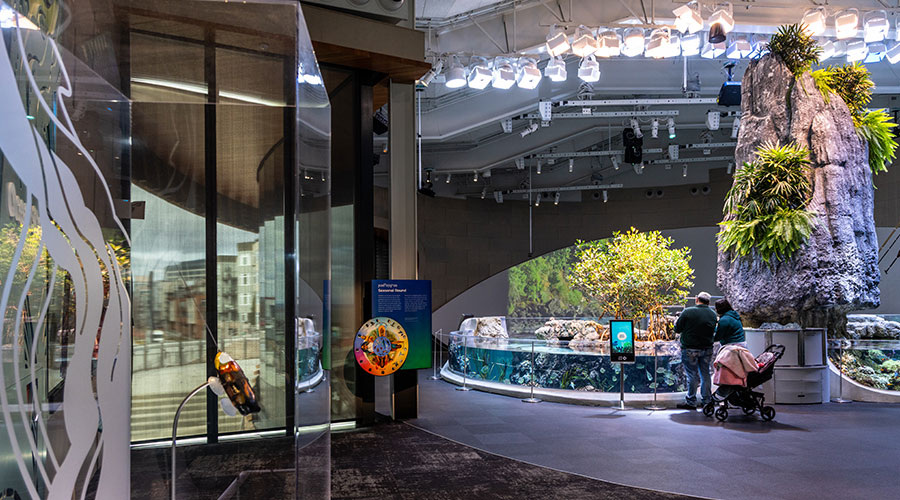Outdoor Lighting Can Be Managed By Lighting Controls
When it comes to controls, however, don't feel limited to just indoor applications. Many outdoor fixtures also come equipped with (or may be are controlled by) sensors that dim or shut them off when they are not needed. As outdoor lighting shifts from HID to LED or high-output fluorescents, the issue of re-strike time becomes moot, allowing easy and safe reductions in light output and wattage. Even sidewalk pole lighting is now available that dims when no movement is sensed nearby, greatly reducing night-time power consumption. In parking structures where lighting may be on 24/7, the ability to drop to a lower level when no motion is sensed may be a big winner.
Simulation software for lighting design has also improved and the cost has fallen, expanding use and allowing tighter (and more creative) ways to minimize lighting wattage while delivering acceptable illumination. Where opportunities exist for inclusion of architectural accessories (e.g., light shelves that reflect daylight deeper into spaces), wider use of daylighting may be simulated, with automated calculation of additional savings as part of the analysis. The same software may be used to optimize fixture selection and location for outdoor lighting.
Sorting Out the Choices
The volume and breadth of lighting control options may make choosing difficult. Compatibility and total cost can further complicate the opportunity. Throw in the integration of daylighting controls with architectural design on new or heavily renovated buildings and "analysis paralysis" may be the result.
Start with a clear view of the goals and scope. Is the desire simply to cut energy costs as much as possible within a given payback period (or return-on-investment) limit? Or are additional criteria (such as LEED certification) also part of the picture? Will both indoor and outdoor lighting (e.g., parking, façade) be part of the job?
Consider using a lighting consultant with experience and knowledge of the choices that best fit your needs and budget. Using an electrical or lighting contractor may yield acceptable but suboptimal results if the firm's knowledge (or percentage) is limited to using systems they know best or sell. A consultant's scope of work may also include overseeing and verifying commissioning of controls.
An independent expert may also provide facility managers a more realistic savings analysis, because the results will not be influenced by a desire to make a sale. Some contractors have used oversimplified methods to calculate savings from controls that fail to take into account the prevailing utility rate structure, yielding numbers that are rosier-than-real. Because lighting controls may, for example, not reduce peak electric demand to the same degree they cut kilowatt-hours (kWh), care is needed when calculating the dollar (as versus kWh) savings. Using average $/kWh rates has gotten more than one facility manager in trouble when an expensive controls project cut usage a lot more than it cut the electric bill.
Lindsay Audin, CEM, LEED AP, CEP, is president of EnergyWiz, an energy consulting firm based in Croton, N.Y. He is a contributing editor for Building Operating Management. He can be reached at energywiz@aol.com.
Related Topics:













